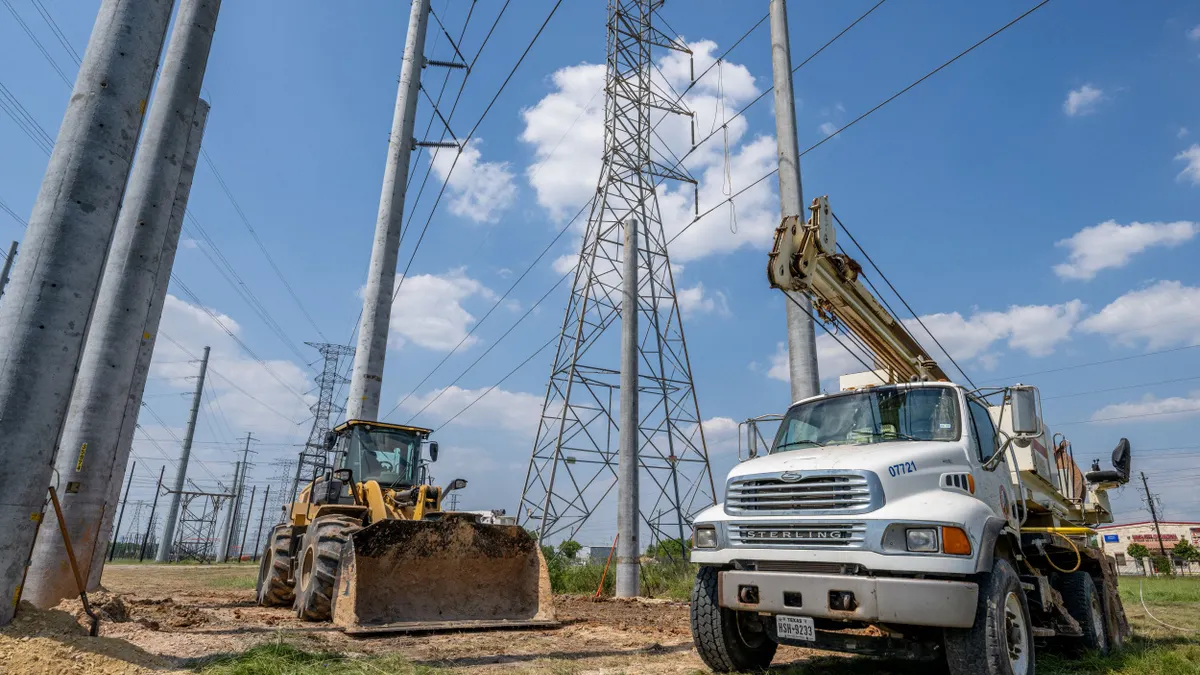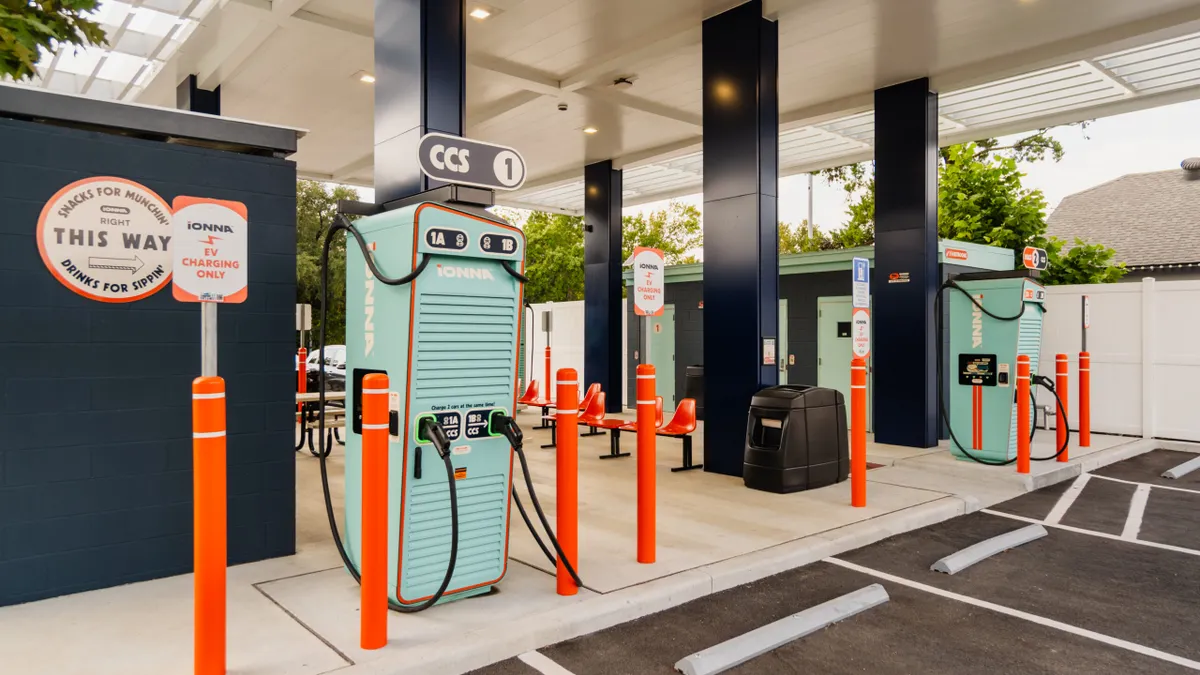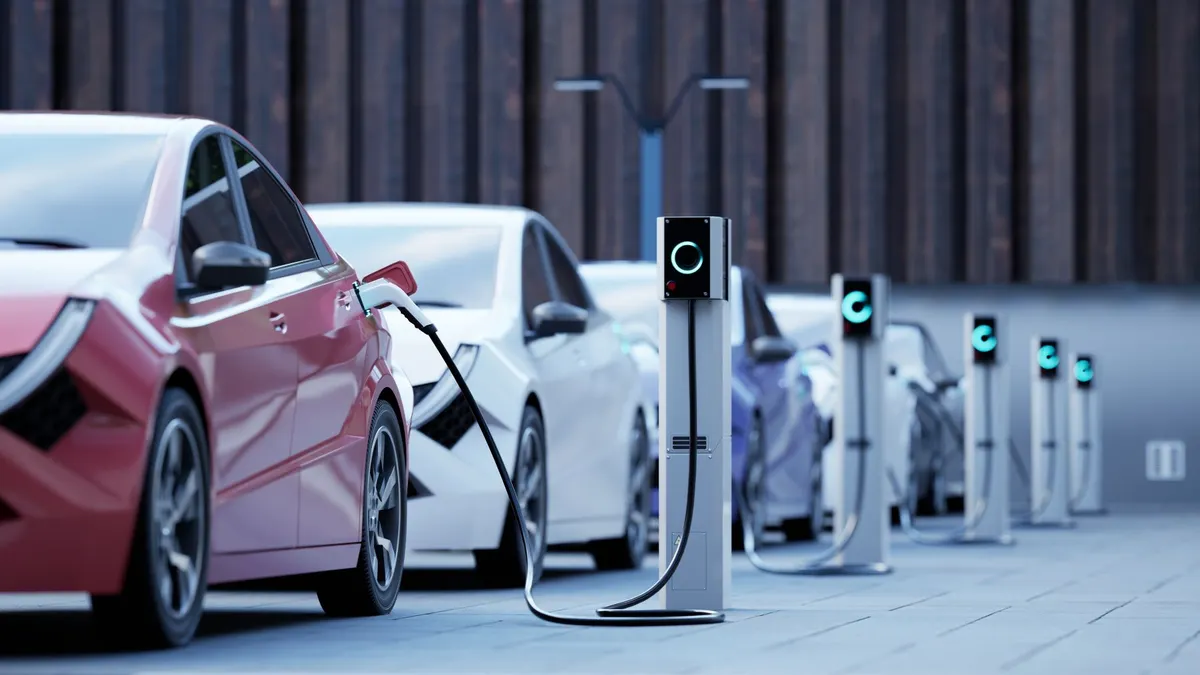As California regulators chart the state’s path towards carbon neutrality – and navigate the future of its natural gas system in the process – they are confronting a sticky, equity-related problem: how to ensure that vulnerable communities aren’t left holding the bag for investments into the gas transmission, distribution and storage system.
In 2018, then Gov. Jerry Brown, D, signed an executive order officially putting California on the path to economy-wide carbon neutrality by 2045 at the latest. In addition, California law commits the state to using 100% zero-carbon electricity by 2045.
The demand for natural gas in buildings is likely to fall in any low-carbon future scenario, a 2020 report prepared for the California Energy Commission notes – but without a proper transition strategy, this could lead to large increases in energy bills, which would likely fall on renters, low-income customers, and other groups who may not be able to make the switch away from gas.
At a workshop conducted by the California Public Utilities Commission in March, Jean Spencer, the supervisor of the natural gas policy and reliability team at the agency’s energy division, outlined the key issue: gas rates, she explained, are a product of revenue requirement divided by the units of gas sold. If the revenue requirement for gas was $100 and you sold 100 units of gas, for example, it would cost a dollar per unit. But if the revenue requirement stays the same, and you only sell 50 units, the price will double.
Addressing these challenges will require a suite of strategies, from reducing costs from the gas system to ratemaking treatments and potentially looking at external sources of funding, the CEC report found. The answers it comes to could also provide guidance to other states that are looking closely at the same questions.
Figuring out this equity problem is “probably the biggest, hardest part of phasing out natural gas from California,” Geof Syphers, CEO of community choice aggregator Sonoma Clean Power, said.
“And if we solve it, the rest is just financing and time. And if we don’t solve it, it’s going to be [a case of] rich getting richer, and poor getting poorer,” he added.
The future of the gas system
Gas utility revenue requirements in California include both the infrastructure and operational costs tied to running the gas system, and utilities file their planned revenue requirement and rates with the CPUC every three years.
In April of 2020, Energy and Environmental Economics and the University of California, Irvine, put together a report for the CEC looking at the scenarios that could allow the state to reduce greenhouse gas emissions by 80% below 1990 levels by the middle of the century, and the implications of these scenarios for the gas system. The study concluded that thanks to a combination of factors – including reductions in gas-fired electric generation – all of the scenarios to meet that target would lead to a decrease in natural gas use.
"While there may be bill savings that are associated in the long-term with electrifying a home versus continuing to stay on the gas system, those upfront costs are really tremendous."

Justin Bogda
Legal Fellow, Communities for a Better Environment
But even in a “high building electrification scenario” – which assumes all new water heaters and HVAC systems sold in the state will be electric by 2040 – the report expects that there will be millions of customers who still use gas in the state through the middle of the century. If the future gas system remains the same in terms of its footprint and operations, the gas system costs may not change drastically despite lower throughput, the report noted. In the high building electrification scenario, which would see the highest decrease in gas system utilization, this could lead to rates that increase 80% by 2030, and 480% by 2050.
For environmental advocates, a key concern is that without intervention, the burden of paying these rates is expected to fall largely on low-income customers and vulnerable communities, who may not have the means to transition off of gas.
“While there may be bill savings that are associated in the long-term with electrifying a home versus continuing to stay on the gas system, those upfront costs are really tremendous,” said Justin Bogda, a legal fellow with the Communities for a Better Environment.
A managed vs unmanaged transition
In January of 2020, the CPUC initiated a rulemaking that, among other things, aimed to eventually create a strategy to “manage the state’s transition away from natural gas-fueled technologies to meet California’s decarbonization goals.”
In the order instituting the rulemaking, the commission noted that complying with local and state-level climate legislation will cause natural gas demand to decline over the next 25 years in the state, and that industry players had been urging regulators to develop long-term plans for phasing out gas utility assets, and outline regulatory accounting mechanisms to both keep gas rates affordable while reducing stranded costs for utilities.
“The difference between a managed and an unmanaged contraction of this gas system could lead to a very big rate increase for customers,” Michael Colvin, director of regulatory and legislative affairs with the Environmental Defense Fund, explained.
If the state were to use public money to incentivize some geographic coordination for this transition, it could consider also taking unused portions of gas infrastructure out of service, thereby eliminating the need to continue to pay for that no-longer used infrastructure. This strategy of geographic targeting could help contain rate impacts on the most vulnerable customers during the transition, according to Colvin.
“Particularly if we cut too much backbone transmission and too much storage, we can create market scarcity which would then, in turn, drive up commodity prices."

Jean Spencer
Supervisor, Natural Gas Policy and Reliability Team, CPUC
“Basically, [we] say look, one community here has just gotten a brand new pipe – maybe they should not be the first community to be electrified, because we just spent all this money getting a new pipe in the ground,” Colvin said.
Instead, “maybe we prioritize this community over here, that’s about to get a new pipe, and have strategic electrification be what we would call a non-pipeline alternative.”
The useful life of different kinds of gas infrastructure can be anywhere from 40 to 80 years, Nihal Shrinath, associate attorney with Sierra Club, said. A big way to reduce costs for people who could be left stuck on the gas system is therefore to stop investing in new gas infrastructure immediately, he said.
“And that means not only not investing in new generation and combustion infrastructure, but also when utilities are looking at replacing gas lines or upgrading the safety of gas lines, looking at potentially lower cost and higher societal benefit options,” like electrification, he added.
Decommissioning portions of gas distribution and transmission systems and pairing that with electrification efforts – or “zonal electrification” – will reduce the gas revenue requirement, Shrinath said.
But in thinking about cutting back on infrastructure, regulators will need to strike a balance, the CPUC’s Spencer cautioned during the March workshop.
“Particularly if we cut too much backbone transmission and too much storage, we can create market scarcity which would then, in turn, drive up commodity prices. So it tends to be easier to prune on the distribution side, because it’s less likely to have impacts on the rest of the system,” she said.
The 2020 CEC report also outlined several potential natural gas transition strategies, including reducing barriers to electrification, avoiding expansion of the gas system, and reducing the costs of the system itself through targeted electrification. Another measure regulators could consider is accelerated depreciation – that is, recovering investments that have been made into the gas system in a shorter time frame than the useful lifetime of the infrastructure.
This can be an effective way to make sure there isn’t as much left to pay at a time when there are fewer people left on the system, Mike Florio, consultant and former CPUC commissioner, said at a separate workshop held by the commission at the end of March. But it does present certain challenges, including a larger rate increase in the near term.
“It’s shifting costs around in time and there is an advantage to doing that, but it comes at a pretty significant upfront cost that would most burden the customers that we’re concerned about,” Florio, said, adding, “it’s a two-edged sword.”
Another potential strategy involves securitizing gas system costs, which would involve having an external entity issue bonds that are typically the highest rated kind because they are secured by a charge on customer bills, Florio explained. So far, the state has generally securitized stranded costs or costs of catastrophic events like a hurricane or wildfire.
California is not yet at the point where any gas system costs are stranded, but “if we are successful in trying to retire portions of the gas infrastructure, particularly at the distribution level… there may be unrecovered investment in those lines that could be securitized,” Florio said.
Regulators could also consider implementing a fixed charge – a specific dollar amount that customers would pay every month, but that tactic would likely hit low-income customers a lot harder, since they typically tend to use less energy than wealthier ones, Florio said. Alternatively, the CEC report noted, the state could also look to funding from outside the gas system – like revenues from its greenhouse gas cap-and-trade program or its general fund – to meet some of the costs of the system.
The CEC’s analysis indicated that the state will have to employ multiple measures to address the equity challenges around the gas system. Other states, like New York, Maryland and Massachusetts, are also beginning to think through the same issues, Colvin said.
“The exact strategies that we use may be things that will have to be adapted or modified to fit the context of the other states – it won’t be an exact copy and paste. But I think if something is found reasonable here, that is certainly a guidance or template that could be used in other locations,” he added.
The role of power providers
Utilities and other power providers like community choice aggregators could also have a role to play in addressing equity challenges around the gas system, Bogda said, including by making bill costs more transparent and improving communications with customers. For most customers, navigating their energy bills and better understanding where they could save money can be a murky and confusing process, he said.
“Utilities can do a much better job at clarifying what the components of a customer’s bills are, and also help connect them to programs that are being funded by the PUC or by different localities,” that could provide them with assistance, Bogda added.
"We can be the early proof that there are retrofits that can reduce total costs and financing can be secured for customers with very little credit."

Geof Syphers
CEO, Sonoma Clean Power
California utilities and regulators face a unique challenge related to equity considerations connected with decarbonization, Pacific Gas & Electric spokesperson Melissa Subbotin said in an emailed statement.
In order to ensure gas and electric rates remain affordable in the long term, “it is important to focus on decarbonizing the gas supply, strategic electrification of the gas system, and providing clean electricity for our customers. In addition, broader rate design and innovative funding mechanisms will be needed as we continue to make progress on a carbon-neutral energy delivery system,” she added.
Sonoma Clean Power is focused on protecting renters and low-income customers as California transitions away from burning natural gas in homes, according to Syphers.
“One experiment we’re running now is to provide clean energy appliances to low-income customers at no cost, and then finance the installation at 0% interest on their utility bills,” Syphers explained. This strategy has worked well for customers who know about it, but has been slow to start due to the COVID-19 pandemic, he said.
In terms of the role utilities and CCAs have to play in helping vulnerable customers, “we can be the early proof that there are retrofits that can reduce total costs and financing can be secured for customers with very little credit,” he said.























